
Sudstadt: The Heartbeat of Nuremberg
Discover Sudstadt in Nuremberg: A Vibrant Melting Pot of Cultures, History, and Modern Charm in the Heart of Germany
Sudstadt, located in the vibrant city of Nuremberg, Germany, is a melting pot of cultures, history, and modern charm. Known for its diverse community, this neighborhood offers a unique glimpse into the everyday life of Nuremberg's residents while still preserving a rich historical backdrop. The streets are lined with an eclectic mix of cafes, restaurants, and shops, each offering a taste of both local and international flavors. Sudstadt is home to several historical landmarks and cultural sites that are a must-see for any visitor. The Nuremberg Transport Museum, for instance, provides an intriguing look into the history of German railways and transportation. Just a short walk away, you'll find the beautifully maintained Luitpoldhain Park, a perfect spot for a leisurely stroll or a peaceful picnic. The park also hosts various events and concerts throughout the year, adding to the neighborhood's lively atmosphere. The local markets of Sudstadt are another highlight, brimming with fresh produce, artisanal goods, and unique souvenirs. The weekly farmers' market is a favorite among locals and tourists alike, offering a chance to sample regional delicacies and experience the community spirit. Whether you're exploring the vibrant street art, enjoying a cup of coffee at a quaint café, or delving into the area's rich history, Sudstadt welcomes you with open arms and endless discoveries.
Local tips in Sudstadt
- Visit the Nuremberg Transport Museum early in the morning to avoid crowds.
- Luitpoldhain Park is best enjoyed during spring and summer when the weather is pleasant.
- Don't miss the weekly farmers' market for fresh produce and local delicacies.
- Explore the side streets for hidden gems in terms of cafes and shops.
- Check local listings for events and concerts in Luitpoldhain Park during your visit.
Sudstadt: The Heartbeat of Nuremberg
Sudstadt, located in the vibrant city of Nuremberg, Germany, is a melting pot of cultures, history, and modern charm. Known for its diverse community, this neighborhood offers a unique glimpse into the everyday life of Nuremberg's residents while still preserving a rich historical backdrop. The streets are lined with an eclectic mix of cafes, restaurants, and shops, each offering a taste of both local and international flavors. Sudstadt is home to several historical landmarks and cultural sites that are a must-see for any visitor. The Nuremberg Transport Museum, for instance, provides an intriguing look into the history of German railways and transportation. Just a short walk away, you'll find the beautifully maintained Luitpoldhain Park, a perfect spot for a leisurely stroll or a peaceful picnic. The park also hosts various events and concerts throughout the year, adding to the neighborhood's lively atmosphere. The local markets of Sudstadt are another highlight, brimming with fresh produce, artisanal goods, and unique souvenirs. The weekly farmers' market is a favorite among locals and tourists alike, offering a chance to sample regional delicacies and experience the community spirit. Whether you're exploring the vibrant street art, enjoying a cup of coffee at a quaint café, or delving into the area's rich history, Sudstadt welcomes you with open arms and endless discoveries.
Iconic landmarks you can’t miss
Handwerkerhof Nuremberg
Explore Handwerkerhof Nuremberg, a charming artisan village filled with unique shops and delightful Bavarian cuisine in a picturesque setting.

Kongresshalle
Explore the Kongresshalle, a profound historical landmark in Nuremberg, reflecting on the past through engaging exhibitions and stunning architecture.

Spittlertorturm
Explore Spittlertorturm in Nuremberg, a stunning historical landmark offering breathtaking views and a deep dive into the city's medieval heritage.

Hall of Honour
Explore the Hall of Honour in Nuremberg, a historical landmark that embodies the city's rich heritage and architectural beauty.

Platz der Opfer des Faschismus
Discover the poignant memorial park in Nuremberg dedicated to the victims of fascism, offering a space for reflection and historical insight.

Schloss Hummelstein
Explore the enchanting Schloss Hummelstein, a historical castle in Nuremberg, where rich history meets breathtaking architecture amidst picturesque landscapes.

Hefnersplatz
Discover the vibrant charm of Hefnersplatz in Nuremberg, where history meets modern culture in a picturesque setting.

Diamant-Kunstwerk
Experience the mesmerizing Diamant-Kunstwerk in Nuremberg, where art and creativity unite in a dazzling display of modern craftsmanship.

Steinpferde
Experience the enchanting Steinpferde in Nuremberg, a historical landmark showcasing stunning stone sculptures and a rich cultural heritage.

Rungengebilde
Explore Rungengebilde, a modern art gem in Nuremberg, where creativity meets culture in an unforgettable setting.

Unmissable attractions to see
Documentation Center Nazi Party Rally Grounds
Explore the Documentation Center Nazi Party Rally Grounds in Nuremberg, a vital museum revealing the history and impact of Nazi propaganda and rallies.
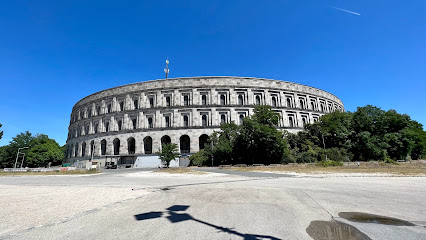
Nürnberg Zoo
Explore the captivating Nürnberg Zoo, where wildlife conservation meets immersive experiences in a beautiful natural setting.
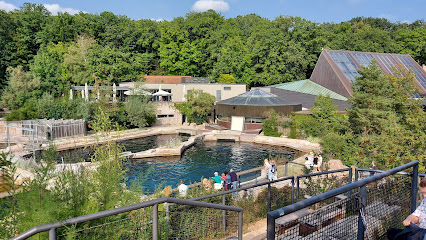
Kongresshalle
Explore the profound history of Kongresshalle in Nuremberg, a site of remembrance and architectural grandeur that narrates the past.

Albrecht Dürer's House
Explore the life and art of Albrecht Dürer at his historic home in Nuremberg, a treasure trove of Renaissance creativity and heritage.

neuer Brunnen am Karl-Bröger-Platz inmitten des Südstadtparks
Discover the serene beauty of Neuer Brunnen at Karl-Bröger-Platz in Nuremberg's Südstadtpark, a perfect blend of nature and culture.

Steinpferde
Explore Steinpferde, a captivating tourist attraction in Nuremberg, where history meets culture in a picturesque setting.

Rungengebilde
Explore Rungengebilde, an architectural gem in Nuremberg, blending rich history and stunning design in a vibrant urban setting.

Essential places to dine
Alte Küch'n & Im Keller
Experience authentic Franconian flavors at Alte Küch'n & Im Keller in Nuremberg - where tradition meets taste.

KoKoNo Nürnberg Luitpoldstraße
Discover authentic Pan Asian flavors at KoKoNo Nürnberg – where exquisite sushi meets vibrant culinary traditions in a stylish setting.

Schäufelewärtschaft
Discover authentic German flavors at Schäufelewärtschaft in Nuremberg – where tradition meets taste in every bite.

Fränk'ness
Discover authentic Franconian flavors at Fränk'ness in Nuremberg – where tradition meets culinary excellence.

Restaurant Balkan Grill
Savor authentic Serbian cuisine at Restaurant Balkan Grill - a culinary gem in Nuremberg offering delicious grilled specialties and warm hospitality.

Lucy Restaurant Nürnberg
Experience authentic Ethiopian cuisine at Lucy Restaurant Nürnberg - where tradition meets flavor in every dish.

Safran Restaurant Nürnberg - Persische Spezialitäten
Indulge in authentic Persian cuisine at Safran Restaurant Nürnberg, where rich flavors meet warm hospitality in a charming setting.

Colombo Restaurant Nürnberg
Experience the vibrant tastes of Sri Lanka at Colombo Restaurant Nürnberg—where tradition meets modern culinary artistry.
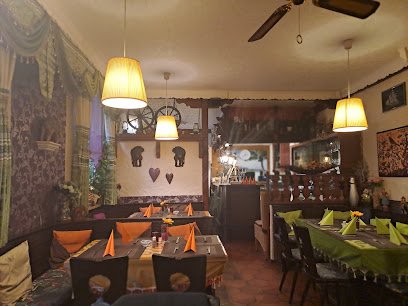
Schützenhof
Discover Schützenhof: A charming Franconian restaurant offering authentic dishes and warm hospitality in Nuremberg.
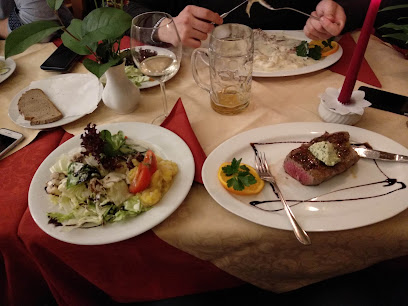
Mesob Restaurant
Discover the rich flavors of Ethiopia at Mesob Restaurant in Nuremberg – where every meal is a celebration of culture and taste.

BARDOLINO Fine.Food.Hotel
Experience culinary artistry at BARDOLINO Fine.Food.Hotel in Nuremberg - where local ingredients meet modern cuisine.

Restaurant Estragon
Experience innovative cuisine at Restaurant Estragon in Nuremberg, where local flavors meet modern culinary artistry.

Markets, malls and hidden boutiques
Woolworth
Explore Woolworth in Nuremberg, a vibrant department store offering a diverse selection of products from clothing to home essentials for every traveler.

Suvegka Jewelery & Textiles - Asian food
Discover a world of flavors at Suvegka Jewelry & Textiles, Nuremberg's premier destination for Asian and international grocery delights.

glore Fair Fashion Outlet Store
Explore ethical and stylish fashion at Glore Fair Fashion Outlet Store in Nuremberg - where sustainability meets style.

Microstore - An- und Verkauf
Explore the charm of Nuremberg at Microstore, your go-to destination for unique gifts, second-hand treasures, and unforgettable finds.

Fantasy Laden
Explore Fantasy Laden in Nuremberg for a magical selection of gifts, toys, and party supplies that capture the essence of whimsy and celebration.

Südstadt-Mode Best Italy Stores GmbH
Explore stylish plus-size fashion at Südstadt-Mode in Nuremberg, where every body is celebrated in style with a diverse collection of trendy clothing.

Elegance Second Hand Boutique
Explore unique fashion finds at Elegance Second Hand Boutique in Nuremberg, where sustainable style meets quality craftsmanship.

Candy Shop
Discover the charm of Nuremberg's Candy Shop, where traditional sweets and modern treats come together for a delightful experience.

Nürnberg Bayern
Explore a vibrant Oriental goods store in Nürnberg, offering authentic cultural items, spices, textiles, and unique souvenirs for every traveler.
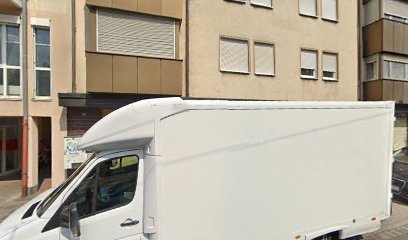
yafatar
Discover vibrant fashion and unique styles at Yafatar, a premier clothing store in the heart of Nuremberg, Germany.

Essential bars & hidden hideouts
Hugos Drinks-Lounge - Nürnberg
Discover Nuremberg's nightlife at Hugos Drinks-Lounge, a stylish hookah and cocktail bar perfect for unwinding and socializing.

Savoy Bar - Nürnberg
Discover the lively atmosphere of Savoy Bar in Nürnberg, where eclectic drinks and vibrant nightlife await every visitor.

SPACE LOUNGE
Experience the vibrant nightlife of Nuremberg at SPACE LOUNGE, where delightful drinks and a lively atmosphere await you.

Moonbar Nürnberg
Experience the vibrant nightlife of Nuremberg at Moonbar, a premier hookah bar and cocktail lounge offering creative drinks and a lively atmosphere.

Carpe diem
Discover Carpe Diem Pub in Nuremberg: A cozy retreat for beer lovers to enjoy local flavors and vibrant nightlife.

Ricky's Bar
Experience the vibrant nightlife at Ricky's Bar in Nuremberg, where great drinks and a lively atmosphere await you.

Café Bar Abseits
Discover Café Bar Abseits in Nuremberg—your cozy retreat for local drinks, vibrant atmosphere, and unforgettable experiences in the heart of the city.

Lounge Bar Cafe 44
Experience Nuremberg's nightlife at Lounge Bar Cafe 44, where vibrant ambiance meets a diverse drink selection for an unforgettable evening.

funky monkey - mobile Cocktailbar & Eventservice
Experience the vibrant atmosphere of Funky Monkey - Nuremberg's premier mobile cocktail bar for unforgettable events and expertly crafted drinks.

Abendstern-Nachtbar
Discover the heart of Nuremberg's nightlife at Abendstern-Nachtbar, a cozy pub offering a vibrant atmosphere and delightful drinks.
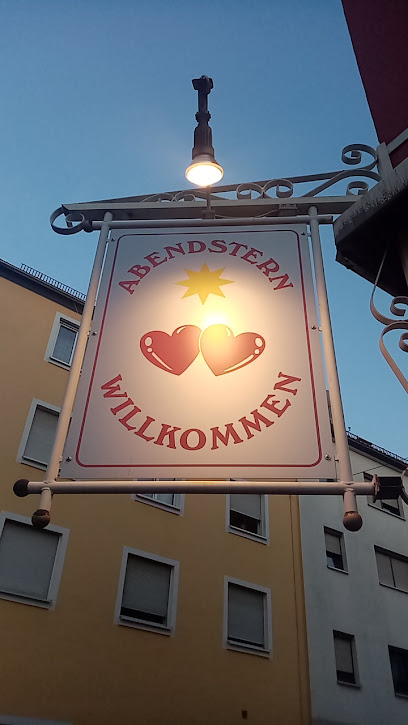
Local Phrases
-
- HelloHallo
[hah-loh] - GoodbyeAuf Wiedersehen
[owf vee-duhr-zayn] - YesJa
[yah] - NoNein
[nine] - Please/You're welcomeBitte
[bih-tuh] - Thank youDanke
[dahn-kuh] - Excuse me/SorryEntschuldigung
[ent-shool-dih-gung] - How are you?Wie geht es dir?
[vee gayt es deer] - Fine. And you?Gut. Und dir?
[goot oont deer] - Do you speak English?Sprechen Sie Englisch?
[shpre-khen zee eng-lish] - I don't understandIch verstehe nicht
[ikh fer-shtay-uh nikt]
- HelloHallo
-
- I'd like to see the menu, pleaseIch möchte bitte die Speisekarte sehen
[ikh merkhte bih-tuh dee shpy-zuh-kahr-tuh zayn] - I don't eat meatIch esse kein Fleisch
[ikh es-uh kine flysh] - Cheers!Prost!
[prohst] - I would like to pay, pleaseIch möchte bitte zahlen
[ikh merkhte bih-tuh tsah-len]
- I'd like to see the menu, pleaseIch möchte bitte die Speisekarte sehen
-
- Help!Hilfe!
[hil-fuh] - Go away!Geh weg!
[geh vegg] - Call the Police!Rufen Sie die Polizei!
[roo-fen zee dee poh-lee-tsigh] - Call a doctor!Rufen Sie einen Arzt!
[roo-fen zee i-nen ahrts] - I'm lostIch bin verloren
[ikh bin fer-loh-ren] - I'm illMir ist schlecht
[meer ist shlehkt]
- Help!Hilfe!
-
- I'd like to buy...Ich möchte ... kaufen
[ikh merkhte ... kow-fen] - I'm just lookingIch schaue nur
[ikh show-uh noor] - How much is it?Wie viel kostet es?
[vee feel koh-stet es] - That's too expensiveDas ist zu teuer
[dahs ist tsoo toy-er] - Can you lower the price?Können Sie den Preis senken?
[kern-en zee den price zeng-ken]
- I'd like to buy...Ich möchte ... kaufen
-
- What time is it?Wie spät ist es?
[vee shpeht ist es] - It's one o'clockEs ist ein Uhr
[es ist iyn oor] - Half past (10)Halb zehn
[hahlp tsayn] - MorningMorgen
[mohr-guhn] - AfternoonNachmittag
[nahkh-mit-tahk] - EveningAbend
[ah-bent] - YesterdayGestern
[geh-stern] - TodayHeute
[hoi-tuh] - TomorrowMorgen
[mohr-guhn] - 1Eins
[iyns] - 2Zwei
[tsvai] - 3Drei
[dry] - 4Vier
[feer] - 5Fünf
[foonf] - 6Sechs
[zeks] - 7Sieben
[zee-ben] - 8Acht
[ahkt] - 9Neun
[noyn] - 10Zehn
[tsayn]
- What time is it?Wie spät ist es?
-
- Where's a/the...?Wo ist ein/der...?
[voh ist iyn/dayr] - What's the address?Was ist die Adresse?
[vahs ist dee ah-dreh-suh] - Can you show me (on the map)?Können Sie mir zeigen (auf der Karte)?
[kern-en zee meer tsay-gen (owf dayr kahr-tuh)] - When's the next (bus)?Wann kommt der nächste (Bus)?
[vahn kohmt dayr nikh-stuh (boos)] - A ticket (to ....)Eine Fahrkarte (nach ....)
[iyn-uh fahr-kahr-tuh (nahkh)]
- Where's a/the...?Wo ist ein/der...?
History of Sudstadt
-
Sudstadt, meaning 'South City', developed in the late 19th century as an extension of Nuremberg’s urban landscape. The area was initially characterized by its industrial growth, with factories and workshops emerging to support the booming economy of the region. This shift from an agrarian society to an industrial hub marked a significant transformation in the neighborhood, attracting a diverse population seeking employment.
-
The architectural landscape of Sudstadt reflects the eclectic styles that emerged during its development. Notable buildings from the late 19th to early 20th century, such as the Art Nouveau structures, showcase the artistic movements of the time. The area is also home to several residential complexes that illustrate the rapid urbanization of Nuremberg during this industrial era, contributing to the city’s rich architectural tapestry.
-
Sudstadt became a cultural melting pot, with waves of immigrants contributing to its diversity. This influx enriched the local culture, evidenced by the variety of shops, restaurants, and community centers that cater to different cultural backgrounds. Festivals and events celebrating various heritages are common, showcasing the neighborhood’s vibrant community spirit.
-
During World War II, Sudstadt, like much of Nuremberg, suffered extensive damage from Allied bombings. Post-war reconstruction efforts played a crucial role in reshaping the neighborhood. Many of the industrial facilities were repurposed, and new residential areas were developed to accommodate the returning population, resulting in a blend of old and new architectural styles.
-
In recent years, Sudstadt has seen revitalization efforts aimed at preserving its historical character while embracing modernity. Community initiatives focusing on sustainability and cultural heritage have emerged, including art projects and local markets that celebrate the neighborhood’s history. These developments reflect a growing awareness of the importance of maintaining Sudstadt's identity amidst ongoing urban change.
Sudstadt Essentials
-
Sudstadt is conveniently located within Nuremberg, easily accessible from other neighborhoods. You can take the U-Bahn (subway) Line U1 to the 'Plärrer' station and transfer to Line U2, which will take you to 'Rathenauplatz' or 'Südbahnhof', the closest stations to Sudstadt. Alternatively, several buses serve the area, including lines 26 and 29, which connect Sudstadt to the city center and other neighborhoods.
-
Sudstadt is well-connected by public transport, including U-Bahn and bus services. The area is also bike-friendly, with dedicated lanes and bike rental services available. Walking is a pleasant option as many local attractions and amenities are within close proximity. For a more leisurely pace, consider renting a bicycle from one of the many local rental shops.
-
Sudstadt is generally a safe neighborhood for tourists. However, like any urban area, it is wise to remain vigilant, particularly in crowded places or when using public transport. Areas around 'Hauptbahnhof' (main train station) can have higher instances of petty crime, so keep an eye on your belongings and avoid engaging with aggressive panhandlers.
-
In case of an emergency, dial 112 for immediate assistance. This number connects you to police, fire, and medical services. Local hospitals and medical facilities are equipped to handle emergencies. It is advisable to have travel insurance that covers medical emergencies. Pharmacies are widely available for minor health needs.
-
Fashion: Do dress comfortably but modestly, especially when visiting religious sites. Don't wear overly revealing clothing in public spaces. Religion: Do respect local customs and traditions. Don't disturb religious ceremonies or take photos where prohibited. Public Transport: Do validate your ticket before boarding; fines are strictly enforced. Don't eat or drink on public transport. Greetings: Do greet people with a friendly 'Hallo' or 'Guten Tag'. Don't be overly formal; a warm smile goes a long way. Eating & Drinking: Do try local specialties like Nürnberger sausages and gingerbread. Don't waste food, as it is considered disrespectful.
-
To experience Sudstadt like a local, consider visiting the weekly markets for fresh produce and local delicacies. Engage with locals in cafes or during festivals; they are often eager to share stories about their culture and history. Explore the nearby parks for a relaxing afternoon, and don't miss the chance to visit local breweries for a taste of traditional Franconian beer.
Nearby Cities to Sudstadt
-
Things To Do in Rothenburg ob der Tauber
-
Things To Do in Wurzburg
-
Things To Do in Munich
-
Things To Do in Karlovy Vary
-
Things To Do in Stuttgart
-
Things To Do in Plzeň
-
Things To Do in Erfurt
-
Things To Do in Heidelberg
-
Things To Do in Frankfurt
-
Things To Do in Leipzig
-
Things To Do in Salzburg
-
Things To Do in Bregenz
-
Things To Do in Kitzbühel
-
Things To Do in Innsbruck
-
Things To Do in Český Krumlov











